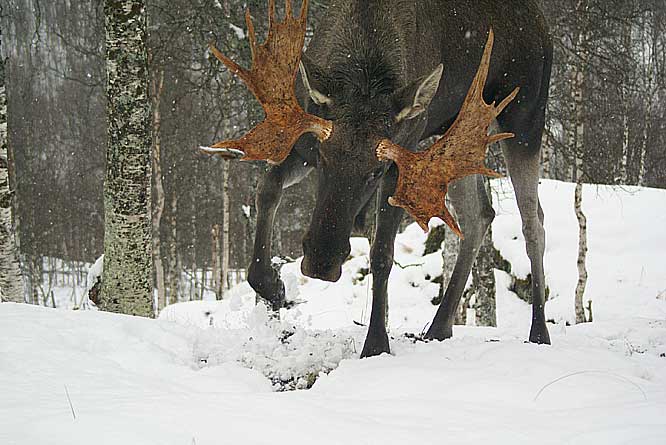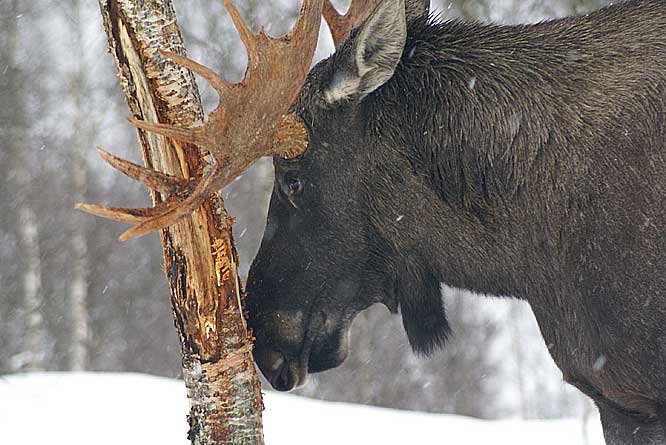European Moose in the Polar Zoo
The European Moose is also known as an Elk. This is a little bit confussing to American and Canadian visitors to Norway as the Elk in North America is a completley different animal. In Norweigen it is called an elg. Some times they wounder into cities looking for food. They are huge animals and you do not want to get in their way.

It is an Iconic animal in Norway. There is a large craft industry making Moose toys, gifts and imitation road signs for the tourist. The European moose can be found in large numbers across the top of Russia, Finland, Sweden and Norway. Males weighs about 320 to 475 kg (705 to 1,047 lb) and females weigh 275 to 375 kg (606 to 827 lb) in this mid-sized subspecies. Shoulder height ranges from 1.7 to 2.1 m (5.6 to 6.9 ft)
Moose are herbivores and eat many different types of vegetation and fruit. They must aim to try and consume enough grass and young tree shoots to meet their daily requirement of 10,000 calories if they want to maintain their body weight. Than means that a Moose must eat and eat and eat. You will often see these wonderful animals eating Aquatic plants whist having a drink from a stream or river. These plants provide the moose with Sodium. They are the only species of deer capable of feeding under the water.

A Bull Moose grows a new set of antlers each spring. They are used to fight of predators and other males during the mating season. They drop off just before winter, after the mating season, to conserve energy. Immature males do not shed their antlers. The new antlers are covered in velvet but this gets rubbed off by September.
Unlike other deer, Moose are mainly solitary, The strongest relationships are between mother and calf. Mating occurs in September and October. The female has a gestation period of eight months and normally give birth to only one calf in May or June. The young Moose stay with there mother for around elven months. They have a life span that ranges for 15-25 years.
Travel books

